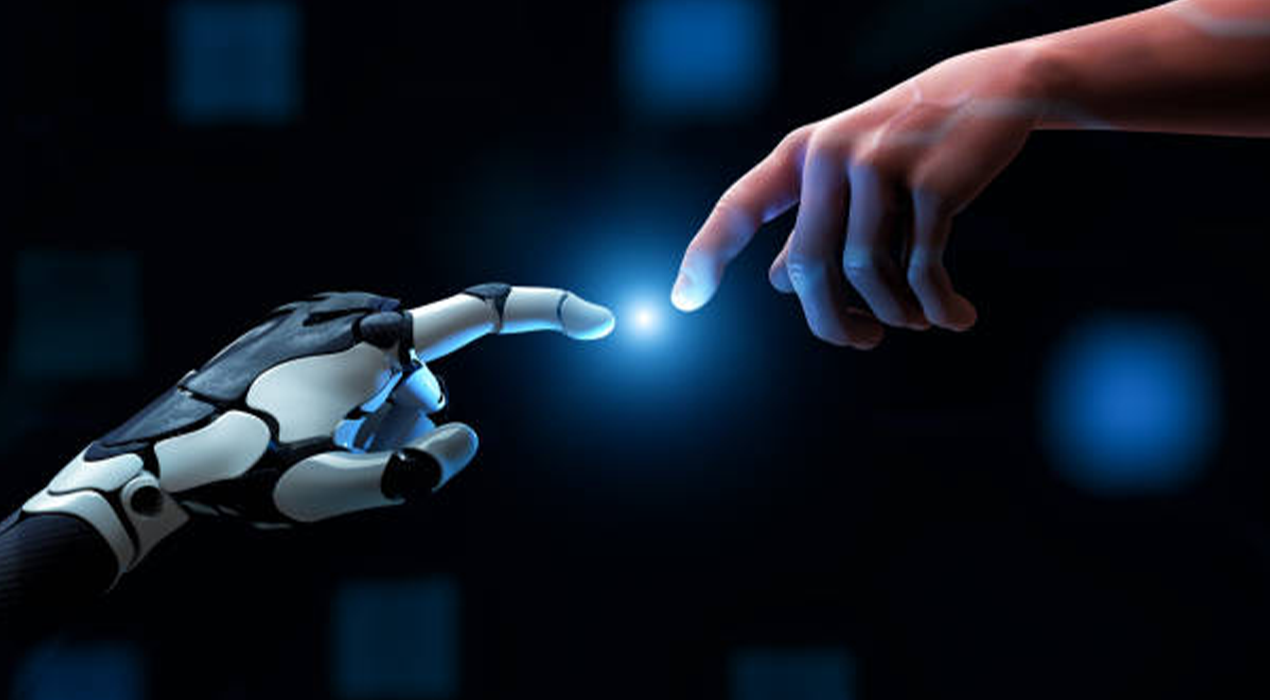
As we stand on the threshold of the fourth industrial revolution, the fears of job loss due to Artificial Intelligence (AI) loom large. Many people worry that AI, automation, and other advanced technologies will replace human workers, leaving them obsolete. But is this really the future we are heading towards? The answer lies not in resisting technology, but in embracing it. To move forward into a world of Human 2.0, we need to harness the power of digital transformation rather than fear it.
The Evolution to HUMAN 2.0
Human 2.0 is the next evolutionary step where humans work symbiotically with emerging technologies like AI, Virtual Reality (VR), Augmented Reality (AR), and Mixed Reality (MR). Rather than seeing these advancements as threats, individuals can view them as tools that amplify their skills, enhance productivity, and create new job opportunities. The key to thriving in this new landscape is adaptation and lifelong learning.
For centuries, humans have adapted to technological shifts—from the printing press to the industrial revolution, to the rise of computers. Digital transformation is simply the next wave in this ongoing evolution, and it offers a multitude of opportunities for those willing to engage with it.
The Solution: Learn, Adapt, and Master
To stay relevant in the age of AI and automation, we must shift from fear to proactive engagement. Here are key strategies to embrace and lead this transformation:
- Upskill and Reskill Continuously
Lifelong learning is the cornerstone of Human 2.0. AI and immersive technologies are evolving rapidly, and the workforce needs to evolve with them. Workers must invest in continuous education, whether it’s through online courses, immersive learning platforms, or professional certifications. From mastering data analysis to understanding AI ethics, the more skills we acquire, the more value we bring to the table. - Become Technology Co-Creators
Instead of being replaced by technology, humans should become co-creators of it. This involves embracing AI, not as a rival but as a collaborator. By mastering how to use AI-powered tools, individuals can automate mundane tasks, freeing up time for more creative and strategic work. Whether you’re in marketing, education, healthcare, or logistics, AI tools can help you optimize performance and deliver better results. - Leverage Immersive Technologies
Virtual, Augmented, and Mixed Reality offer unique ways to engage with the world. By leveraging these tools, workers can create immersive experiences that were once unimaginable. From training simulations to virtual workspaces, immersive technology is transforming industries. For instance, a construction engineer can now walk through a building using VR before it’s even built, or a doctor can perform intricate surgeries in AR-assisted environments. These tools enhance human capabilities rather than replace them. - Cultivate a Growth Mindset
A growth mindset is essential for navigating digital transformation. By embracing challenges, learning from failures, and staying curious, individuals can position themselves as adaptable leaders of change. The mindset of “I can learn this” will carry people forward, even in fields they’ve never explored before.
Real-World Transformations Powered by Immersive Technologies
The shift toward Human 2.0 is not just theoretical; it’s already happening across industries. Here are some real-world examples of how immersive technology is reshaping the workforce:
- Healthcare
Surgeons are using AR to visualize complex medical procedures, such as neurosurgery. By projecting critical data directly into their line of sight, AR allows surgeons to perform with unprecedented precision. In 2020, Johns Hopkins University made history with its first AR-assisted spinal surgery. The doctor wore AR glasses that projected the patient’s spine in 3D, enhancing visibility and accuracy. - Education
In classrooms around the world, VR is transforming education. Immersive learning platforms allow students to explore ancient cities, travel to the depths of the ocean, or experience life on the International Space Station. These experiences foster a deep engagement with content, enhancing retention and understanding in ways traditional learning methods cannot. - Architecture and Construction
Virtual Reality is now a crucial part of the architectural design process. VR allows architects and engineers to walk through virtual models of their buildings before construction even begins. For instance, companies like Foster + Partners use VR to create immersive environments where clients can experience their future homes and offices in a fully immersive way, allowing for changes before a single brick is laid. - Manufacturing
Mixed Reality is improving safety and efficiency in manufacturing. Boeing uses MR technology to assist engineers in assembling complex aircraft systems. Using MR headsets, workers can see instructions and part placements overlaid directly onto their physical workspace, reducing errors and speeding up production time.
Becoming Future-Ready
The journey to Human 2.0 is about taking control of your future. Instead of fearing job loss or technological displacement, embrace digital transformation. By upskilling, adopting new technologies, and cultivating a growth mindset, you can become not only a participant but a leader in the digital era.
The future is not one where humans are replaced by machines—it’s one where humans and technology work hand in hand to solve bigger problems, create better solutions, and unlock new levels of potential.
Lead the charge, adapt to the changes, and become the master of these futuristic technologies. The future belongs to those who dare to evolve into Human 2.0.



